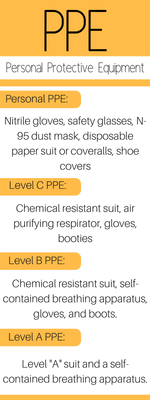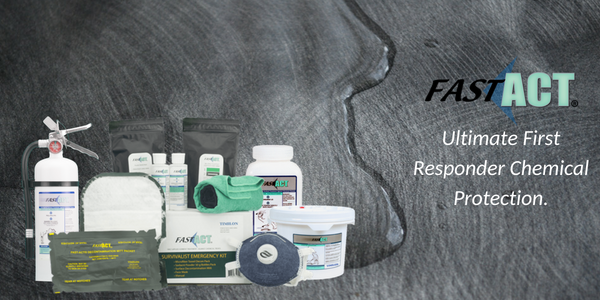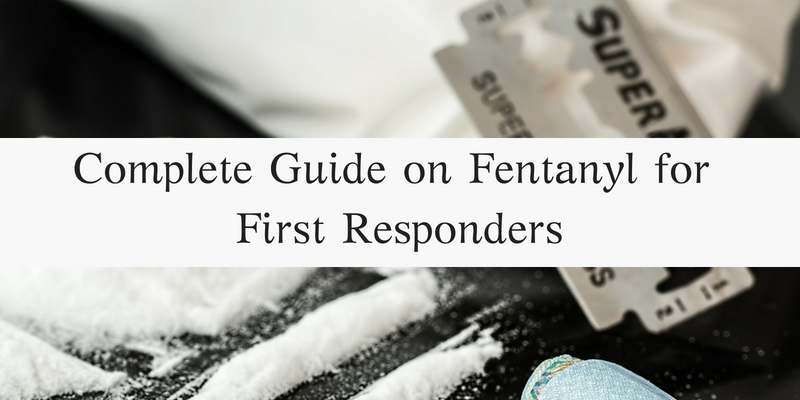According to the U.S. Department of Justice, law enforcement in the United States has seen a significant increase in the overall availability of dangerous synthetic opioids. A large majority of these synthetic opioids are structural derivatives of the synthetic drug ‘Fentanyl’. Fentanyl is a known synthetic opioid that is listed as a Schedule II prescription drug that simulates the same effects as the drug Morphine in the body. However, fentanyl in comparison to morphine has a potency that is 50-100 times more than morphine. Fentanyl in a clinical or hospital environment is commonly used to relieve severe pain, such as for post-surgery or pain management for cancer. However, the drug Fentanyl has progressively been transformed into a ‘street’ drug that is sometimes mixed with heroin known by the names China Girl, China White, and Goodfella, among others, and can produce hazardous environments and deadly symptoms to those exposed.
The BC Coroners Service for Fentanyl detected deaths in British Columbia alone, every year, in up till April 30, 2017, to determine the steady increase in deaths caused by the Fentanyl drug. In British Columbia, there were an estimated 50 deaths from Fentanyl in 2013 compared to 654 deaths in 2016. And as time progresses the hazard presented by this drug is exacerbated by the threat posed to even our first responders who unknowingly enter into contaminated areas where fentanyl may be present. Fentanyl can be ingested orally, inhaled through the nose or mouth, or absorbed through the skin or eyes, and can be extremely toxic even in trace amounts which could potentially lead to health-related complications, respiratory depression, or death.
 The History of Fentanyl
The History of Fentanyl
Fentanyl was first created in 1959 by a Belgian chemist. The drug was later marketed as an intravenous analgesic drug that was called Sublimaze. This synthetic opioid was first utilized in pharmaceutical facilities to provide opioid pain management including a transdermal patch, flavored lollipops, sublingual/effervescent tabs, and nasal spray. The transformation of this drug from a pharmaceutical pain management opioid to an illegal street drug began in the 1990’s as the first discovery of what is believed to be the first domestically produced illegal fentanyl in the United States. The level of hazard contained in street drugs that are composed of fentanyl is grave, with past street drugs such as “Tango and Cash”, a brand of street heroin manufactured in 1991 that contained approximately 12 percent fentanyl produced over 126 overdose deaths in total. And as years have progressed the level of danger has increased tenfold, with over 1,013 fentanyl-related deaths between 2005 and 2007, which were attributed to the lethal combination of heroin and fentanyl, and 9,580 overdose deaths in 2015 from synthetic opioids like fentanyl.
The heroin-fentanyl epidemic has led to the creation of the DEA’s Heroin-Fentanyl Task Force (HFTF). This organization consists of several government agencies that are working together to tackle the nationwide fentanyl and synthetic opioid issue. Currently, this organization (HFTF) consists of personnel from the DEA, HSI, CBP, FBI, USPIS, and IRS in the pursuit to eradicate this growing hazard to the environment and human health.
Understanding the Different Forms of Fentanyl-Related Substances
Fentanyl first began as a prescribed replacement for morphine used in both human and veterinary medicine. This drug acts as an anesthetic during surgery, to help alleviate pain after surgery, and to treat overall severe pain. Fentanyl is also used in situations where patients are physically intolerant of other painkillers.
Illegal forms of fentanyl have been long associated with heroin, as it can act as a replacement for heroin, and even be used in the manufacturing of fake pharmaceutical pills such as those of oxycodone, hydrocodone, and alprazolam. Fentanyl and other substances with fentanyl contain a higher strength than that of morphine, however, the effects can significantly vary depending on the potency and the purity of the illegal synthetic opioid.
Carfentanil vs Fentanyl
Although fentanyl is 50-100 times more potent than morphine and even 30-50 times stronger than heroin, it is no match to its similarly structured Carfentanil. Carfentanil is up to 10,000 times more potent than morphine and should be treated with extreme caution, as exposure to a small amount could be lethal and lead to significant health-related complications, or death.
Carfentanil is in the same chemical family as fentanyl, but more complex with an additional carboxyl group and an additional carbonyl group. This compound is reportedly 100 times stronger than the same amount of fentanyl and is classified as a weapon of mass destruction. Those who come into contact with this chemical should exercise extreme caution, especially those first responders who are handling chemicals that could potentially be harmful such as carfentanil.
 Fentanyl Hazards to First Responders
Fentanyl Hazards to First Responders
The DEA concluded based on their 1st quarter of 2017, that there were 230 identifications of fentanyl or fentanyl-related substances from seized drug evidence. Fentanyl accounted for 58 percent of the found drugs from the DEA. Therefore, the level of hazard present to first responders is extremely high. Fentanyl and fentanyl-related substances are constructed to be absorbed into the body through any means, including injection, ingestion, and from contact through the skin, thus the accidental exposure to first responders is a real danger. Accidents and accidental exposure can happen from a number of encounters such as search and arrest warrants, undercover purchasing, obtaining drug evidence, or seizures of clandestine labs.
Exposure Risks & Treatment
Exposure to fentanyl can be highly dangerous, as it can lead to serious negative health effects, respiratory depression, and even death. Even police dogs (k9’s) are at risk of serious health effects from fentanyl exposure. However, with proper training and equipment, you can shield yourself from exposure to this potentially toxic chemical substance. Personal protective equipment (PPE) is a necessary protection for all first responders to have on them, no matter the situation. There are four levels of PPE including personal PPE, Level C PPE, Level B PPE, and Level A PPE.
When there is a gross fentanyl contamination, meaning the risk of exposure is high, level “A” PPE should be used. Level “A” PPE is routinely used by the DEA in situations involving fentanyl. Those first responders who could potentially encounter fentanyl or fentanyl-related substances should keep an individual PPE kit that includes nitrile gloves, N-95 dust mask, eye protection, paper coveralls, and Naloxone injectors. Law enforcement officials and first responders who come into contact with this drug have safety precautions in place to avoid hazards. But if someone does come into contact with this fatal drug, having Naloxone to administer is critical. Naloxone is an antidote for opioid overdose and administering naloxone can reverse an opioid overdose.
How to Detect Fentanyl
When first responders enter any environment, they must look for tell-tale detection signs of fentanyl or fentanyl-related substances in the area. The detection signs of fentanyl include the following:
- Any victims that are bluish in color, Cyanosis. This could include skin or lips and is an indicator of a fentanyl overdose.
- Mail or shipments in the area address from China could also indicate fentanyl. Many China-based organizations ship fentanyl substances to the U.S. as they are a big manufacturer of this drug.
- Lastly, first responders should consider the “Fentanyl Footprint” in the area. Fentanyl footprint is clusters of overdoses and overdose deaths that have occurred within a small area that is related to the substance.
Decontamination of Fentanyl & Fentanyl-Related Substances
Decontamination is the process used to make an individual and their equipment safe by physically removing toxic substances quickly and effectively. Due to the high volatility of fentanyl and fentanyl-related substances an extreme level of caution must be implemented in the decontamination of these substances. The first step of decontamination is to wear appropriate protective clothing PPE to help avoid contact with chemicals. The most important step in decontamination is the neutralization of the chemical compound released. Depending on the chemical, a different solution may need to be implemented to destroy the chemical. However, the level of danger will become heightened the longer the chemical is present in the environment, therefore you want a universal solution that can be implemented on any chemical to effectively neutralize the toxic substance.
FAST-ACT utilizes a patented technology that effectively neutralizes a broad spectrum of chemicals including chemical warfare agents, fentanyl, and even the toxic carfentanil. FAST-ACT works quickly to significantly reduce the hazards presented by chemicals. By the nature of FAST-ACT’s innovative chemistry, hazards are chemically bound to the surface of the powder minimizing off-gassing. Best of all, FAST-ACT can be safely applied to any liquid spill or vapor release enabling Emergency Responder to utilize one technology when faced with a wide variety of known and unknown chemical hazards. Learn more about how to use FAST-ACT to decontaminate fentanyl and fentanyl-related substances and how FAST-ACT can aid in minimizing the hazards presented to first responders by the chemical Fentanyl.



